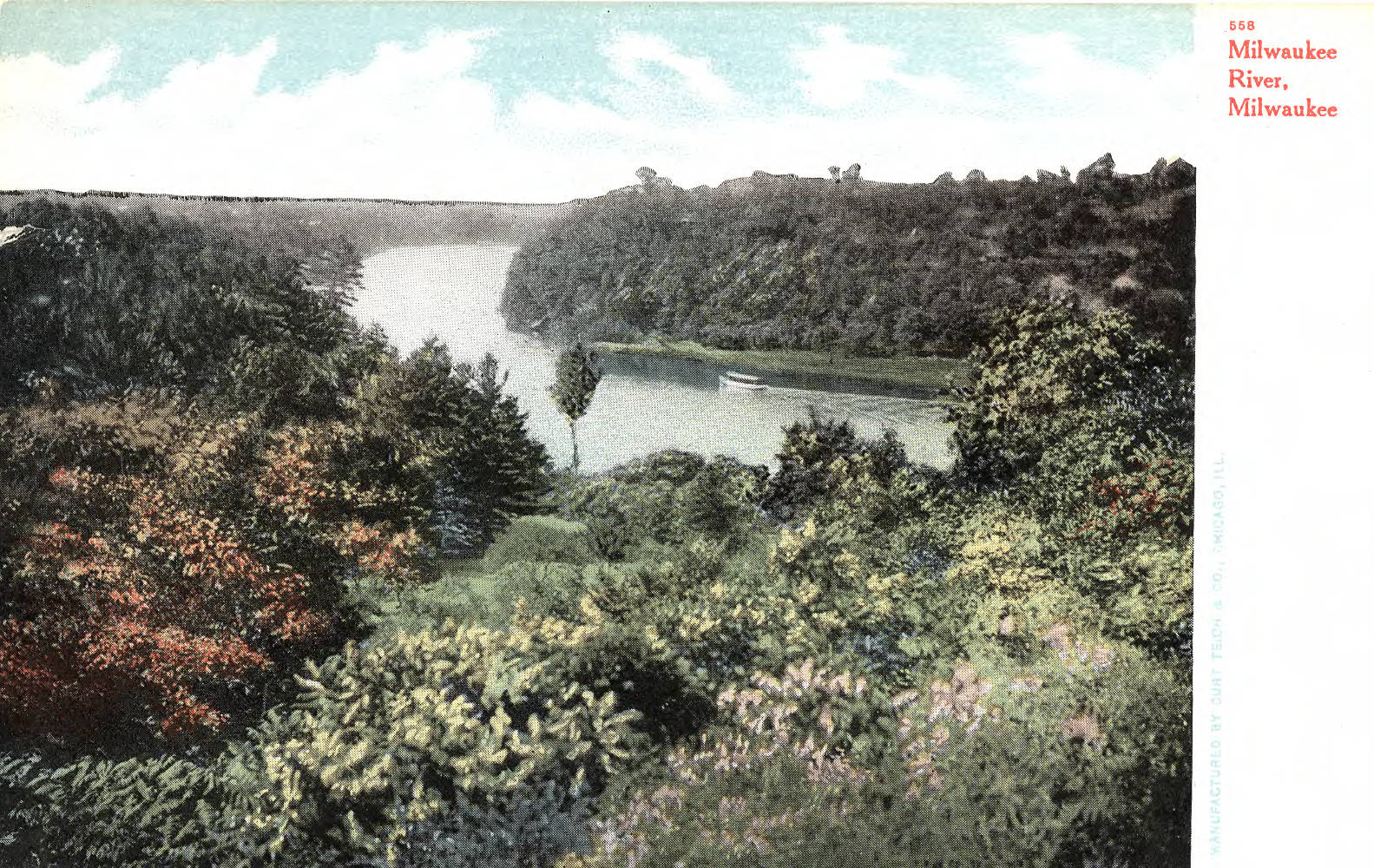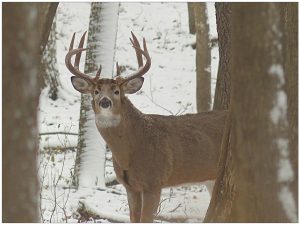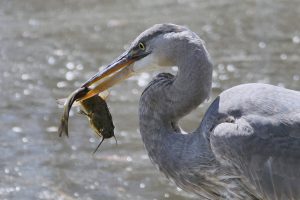In the 1850s, the Milwaukee area’s rapidly increasing human population altered the environment in profound, unprecedented ways. Not that the region had previously been devoid of humans, or that the environment had never before been altered. Far from it. Evidence shows that the area had seen frequent if not continuous human habitation for at least the previous 8,000 years. Through early first-hand historic accounts and more recent scientific investigations, we know that the natural environment was never a “pure” or unchanging wilderness but rather an environment in flux, from climate change, overhunting, burning, and other events. But during the mid-1830s, an influx of Europeans and Americans from eastern states sought to establish cities and farms where for centuries there had been villages, prairies, and forest. Initially, the trickle of new immigrants had only a moderate effect on the flora and fauna of the region, with perhaps the near extinction of the beaver being the first harbinger of ecological change to come. But numbers matter, and the rate of resource extraction, habitat destruction, and pollution resulting from the burgeoning population after 1850, makes that date (or thereabouts, as there was no single defining moment) a watershed time in the history of the Milwaukee area.
Much of the ecological change occurring since humans began to occupy North America and the Milwaukee area was the result of climatic forces uninfluenced by human behavior. At various times over the last 2.6 million years, southeast Wisconsin has been under a mile of ice. Retreating glaciers 14,000 years ago left behind, lakes, rivers, rolling hills, and a mix of tundra and boreal forest supporting herds of mammoth, mastodon, caribou, dire wolves, and saber-toothed cats. The melting glaciers formed the Great Lakes, which more or less took their current shape 8,000 years ago.[1]
By about 10,000 years ago the ice age megafauna were either extinct or extirpated from the area, driven away and/or reduced in number by a changing climate and by the arrival of a new predator—humans. While tundra was giving way to deciduous forest, oak savanna, and prairie, mammoths and saber-toothed cats were replaced by greater numbers of white-tailed deer, gray wolves, elk, black bear, and cougar. Native Americans also played a role in maintaining this variety of habitat. Controlled burns promoted open grassland and oak savanna, which created favorable conditions for grazing prey animals and helped proliferate edible and useful plants. These early human occupants also left their mark on the landscape in the form of large earthen mounds. Built to resemble animals such as panthers, turtles, and birds, or conical in shape, the mounds were created by various Native American communities between 800 B.C.E and 1200 B.C.E, though anthropologists estimate some may be far older. Similar to earthen formations found throughout the Mississippi basin, the mounds ranged in size from eight to twelve feet high and forty to 400 feet in length. Excavations during the nineteenth century revealed the conical-shaped mounds to contain human remains, along with pipes, vases, arrowheads, chisels and copper works. Most mounds would eventually be plowed over by farmers in the nineteenth century, but many were overgrown by forest and/or worn down by erosion long before then (Native Americans living in southeast Wisconsin in the 1830s claimed no knowledge of or ancestry from the mound builders).[2] Besides these few dozen manmade undulations and a handful of clearings for villages of a few hundred people, a time-traveling visitor to southeast Wisconsin 5,000 years ago would have noticed few differences between the landscape of that time and 1835.
That Milwaukee attracted large numbers of Native Americans (or anyone else for that matter) is not surprising. Multiple rivers provided easy transportation, as well as a bounty of fish. Before the 1850s, Lake Michigan boasted approximately 150 separate species of fish, including lake sturgeon up to nine feet long, as well as whitefish, herring, trout, blue pike and yellow perch. The Milwaukee River ran clear, described by an early settler as “a silver thread…in which Indians could detect and spear fish at the depth of twelve and eighteen feet.” Fur traders and early settlers described the area as one of bounty, where forests of oak, maple, hickory and beech contained plentiful game, and marshes attracted large number of waterfowl. They noted large flocks of sharp-tailed grouse and prairie chickens and were awestruck by annual migrations of passenger pigeons down the western shore of Lake Michigan so dense and numerous that they darkened the sky. Wild rice was abundant in the Menomonee River valley, while on the hillsides villagers planted extensive fields of corn, potatoes, zucchini, and squash, as well as groves of plum trees. High bluffs along the lake shore protected the area from storm surges and lake-borne flooding. Bark or skin-covered wigwams dotted the land at a half-dozen village locations, decreasing in number during the winter hunting season. Although there is no single agreed-upon meaning for the Anishinaabemowin word “Milwaukee,” the list of candidates—the good land, rich or beautiful land, gathering place by the river, or place of the gathering of the multitudes—suggests it as an especially prized location.[3]
Settlers who recalled the Milwaukee area landscape of the 1830s often reported a landscape of vast, towering forests with so little undergrowth one could ride a horse through at a trot without trouble, but in fact large swaths of Milwaukee, Waukesha, Ozaukee, and Washington counties were open prairie and oak savanna prior to the 1850s. Native Americans helped maintain the prairie and savanna environments through controlled burns, promoting new plant growth and encouraging the local deer population. Villagers also cleared areas for small-scale agriculture. In Milwaukee County, forests of beech, sugar maple, basswood and other species covered about 84 percent of the land area, concentrated along Lake Michigan and in the northern half of the county. Lowland hardwood swamps and tamarack swamps and bogs were scattered throughout the area, while oak savanna and prairie predominated in the southwestern portion of the county. The Menomonee River estuary supported open wetlands dominated by grasses and sedges. In Waukesha County, the estimated total forest acreage in 1836 was 156,000, or just under half of the county, but this dropped to 59,613 (16 percent of the area) by 1885, most of it converted to farmland (already by 1850, 60 percent of the acreage in the county had been converted to farmland, primarily for wheat). Cattle grazing in remaining wood lots virtually eliminated the growth of young trees. By the early twentieth century 99 percent of prairie, 97 percent of original forest and 100 percent of oak savanna, were eliminated from Milwaukee County, with similar patterns throughout the four county area.[4]
The difference between pre-European settlement and post-1850s animal diversity in southeast Wisconsin is similarly stark. The beaver was the first to go, driven nearly to extinction in North America by an active fur trade that for over two centuries strove to maintain a supply of beaver pelts for a voracious European and then American market. Southeast Wisconsin was one of the last places east of the Mississippi to be tapped out of beaver, but already by the 1830s beaver pelts rarely appeared on packing lists of local fur traders. The fact that the fur trade was still commercially viable in the Milwaukee area into the 1840s is a testament not only to the continued presence of a diversity of larger species of mammal but also to the existence of the habitat in which they lived. In a letter to the American Fur Company in December 1840, Solomon Juneau listed the furs he was about to send: Bear, bear cub, otter, marten, mink, fisher, red fox, grey fox, lynx, wildcat, wolf, deer, muskrat, raccoon—and even beaver. But as with the beaver, increased hunting or intentional destruction drove other species from the area. The Territory of Wisconsin placed a bounty on wolves beginning in 1839; by the end of the nineteenth century they were eliminated from southeast Wisconsin, then from the entire state by 1960. Deer often benefitted from forest clearing, but hunting reduced their numbers in the mid-nineteenth century—after the late 1890s deer were not seen again in the Milwaukee area until 1947. Turkey were extirpated by the mid-1850s, and the once seemingly infinite passenger pigeon was hunted to near extinction by the 1880s, the last dying in a Cincinnati zoo in 1918. Forest clearing also played a role in the extinction of the passenger pigeon, however, and habitat destruction played a pivotal role in driving other species from the area. Five of seven salamander species, seven of twelve snake species, one of five turtle species, and three of eleven frog and toad species were eliminated from Milwaukee County following large-scale human population increases after 1850. A few species actually benefitted—highly adaptable raccoons thrived in the new, largely predator-free landscape, and grassland bird species quickly adapted to hay, alfalfa, and wheat—but for most species the rapid change in the landscape during the second half of the nineteenth century either greatly reduced their numbers or made survival in the new environment simply impossible.[5]
The changes on land were mirrored in the rivers and Lake Michigan. Until 1846 the Milwaukee River followed its natural course, joining the Menomonee and Kinnickinnic Rivers and emptying into Lake Michigan at an ever-shifting, shallow mouth of clear water about five feet deep over white sand. This was fine for canoes and small sailing craft, but no good for large sailing ships and steamboats. In 1846, the opening was dredged to eleven feet deep, and in 1852 further dredging cut through the dune to thirteen feet and extended this depth 3,000 feet upriver. Another dig in 1866 brought the river depth to nineteen feet and added wooden cribs each side of the deepened channel. By this time the Milwaukee River near downtown was essentially an open sewer, and work had begun to fill in much of the Menomonee River Valley wetland. The Lake Michigan ecosystem actually fared relatively well during the nineteenth century, owing in part to its size as well as to its comparative isolation during that time from salt-water borne invasives. Over-fishing did not begin to deplete native trout and whitefish until the 1940s, and although the Erie and Welland Canals, both operational by 1830, provided a path for the sea lamprey to eventually reach Lake Michigan. Discovered in Lake Ontario in 1835, it finally reached Lake Michigan in 1936. Other fish species were intentionally introduced to the lake during the late nineteenth and early twentieth centuries, such as domestic carp, rainbow smelt, and Japanese salmon (the Japanese salmon did not survive), but they did not replace or adversely impact native species of trout, whitefish, perch and sturgeon. Later canal development, especially the Saint Lawrence Seaway, allowed larger ocean-going vessels to reach Lake Michigan along with invasive species residing in their ballast water. Combined with the arrival of sea lampreys and alewives via canals, by the end of the twentieth century the zebra and later quagga mussels hitching a ride on ships entering the lake made the Lake Michigan ecosystem unrecognizable from its pre-settlement form.[6]
In 1840 the City of Milwaukee’s population of 1,700 had barely exceeded the number of people who had lived in the area for centuries (neighboring communities such as Wauwatosa and Hales Corners as yet had a few dozen residents), but by 1850, the census showed the City had ballooned to 20,061, an over 1000 percent increase and by far the largest proportional jump in the history of the City. Area boosters celebrated these numbers as evidence of commercial potential and future greatness, but the ecological health of southeast Wisconsin were the poorer for it.
Footnotes [+]
- ^ Adrian P. Wydeven and Charles M. Pils, “Changes in Mammalian Carnivore Populations,” in The Vanishing Present: Wisconsin’s Changing Lands, Waters and Wildlife, ed. Donald M. Waller and Thomas Rooney (Chicago, IL: University of Chicago Press, 2008), 257.
- ^ Increase Allen Lapham, Antiquities of Wisconsin as Surveyed and Described by I.A. Lapham (Washington, D.C.: Smithsonian Institution, 1855), 82-83; James S. Buck, Pioneer History of Milwaukee, vol. 1 (Milwaukee: Symes, Swain & Co., 1881), 155; Robert A. Birmingham and Leslie E. Eisenberg, Indian Mounds of Wisconsin (Madison, WI: University of Wisconsin Press, 2000), 3-6.
- ^ William Ashworth, The Late Great Lakes: An Environmental History (New York, NY: Alfred A. Knopf, 1986), 115; Milwaukee Writer’s Project, History of Milwaukee County (Milwaukee: Milwaukee Public Library, 1947), 8; Andrew J. Vieau, Sr., “Narrative of Andrew J. Vieau, Sr.,” in Collections of the State Historical Society of Wisconsin, vol. XI, ed. Rueben G. Thwaites (Madison, WI: State Historical Society of Wisconsin, 1900), 227; Samuel Stambaugh, “Report on the Quality and Condition of Wisconsin Territory, 1831,” in Collections of the State Historical Society of Wisconsin, vol. XV, ed. Reuben G. Thwaites (Madison, WI: State Historical Society of Wisconsin, 1900), 420-423; Peter J. Vieau, “Narrative of Peter J. Vieau,” in Collections of the State Historical Society of Wisconsin, vol. XV, ed. Reuben G. Thwaites (Madison, WI: State Historical Society of Wisconsin, 1900), 468; A.T. Andreas, History of Milwaukee, Wisconsin, vol. 1 (Chicago, IL: The Western Historical Company, 1881), 37-39.
- ^ Lawrence A. Leitner, John H. Idzikowski, and Gary S. Casper, “Urbanization and Ecological Change in Milwaukee County,” in The Vanishing Present: Wisconsin’s Changing Lands, Waters, and Wildlife, ed. Donald M. Waller and Thomas P. Rooney (Chicago, IL: University of Chicago Press, 2008), 364; Marlin Johnson, “Natural Features and Land Use,” in From Farmland to Freeways: A History of Waukesha County, Wisconsin, ed. Ellen D. Langhill and Jean Penn Loerke (Waukesha, WI: Waukesha County Historical Society, 1984), 25.
- ^ Ramsey Crooks to Solomon Juneau, December 19, 1840, Solomon Juneau Papers, Milwaukee County Historical Society Library, Milwaukee; Wydeven and Pils, “Changes in Mammalian Carnivore Populations,” 259-277; Gary S. Casper, “Changes in Amphibian and Reptile Communities,” in The Vanishing Present: Wisconsin’s Changing Lands, Waters, and Wildlife, ed. Donald M. Waller and Thomas P. Rooney (Chicago, IL: University of Chicago Press, 2008), 292-293.
- ^ Ashworth, Late Great Lakes, 61.
For Further Reading
Bergland, Martha, and Paul G. Hayes. Studying Wisconsin: The Life of Increase Lapham, Early Chronicler of Plants, Rocks, Rivers, Mounds and All Things Wisconsin. Madison, WI: Wisconsin Historical Society Press, 2014.
Egan, Dan. The Death and Life of the Great Lakes. New York, NY: W.W. Norton & Company, 2017.
Fiege, Mark. The Republic of Nature: An Environmental History of the United States. Seattle, WA: University of Washington Press, 2012.
Waller, Donald M., and Thomas P. Rooney, eds. The Vanishing Present: Wisconsin’s Changing Lands, Waters, and Wildlife. Chicago, IL: University of Chicago Press, 2008.




0 Comments
Please keep your community civil. All comments must follow the Encyclopedia of Milwaukee Community rules and terms of use, and will be moderated prior to posting. Encyclopedia of Milwaukee reserves the right to use the comments we receive, in whole or in part, and to use the commenter's name and location, in any medium. See also the Copyright, Privacy, and Terms & Conditions.
Have a suggestion for a new topic? Please use the Site Contact Form.